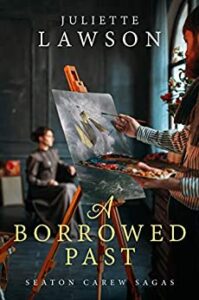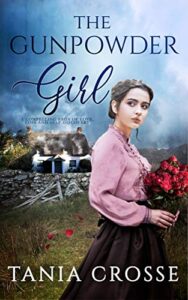 In my previous article for Frost, I celebrated two novels, A Mother’s Secret and The Italian House, which are notable for their wonderful sense of place. In these stories, the authors, respectively Jan Baynham and Teresa Crane, created their settings so evocatively that they produced books of the type that make readers say, ‘It made me feel I was there.’
In my previous article for Frost, I celebrated two novels, A Mother’s Secret and The Italian House, which are notable for their wonderful sense of place. In these stories, the authors, respectively Jan Baynham and Teresa Crane, created their settings so evocatively that they produced books of the type that make readers say, ‘It made me feel I was there.’
This time, I’m writing about novels that have a particular depth and interest thanks to the attention paid to the historical detail. Part of the authors’ skill in this is the way each of them has woven the details into the narrative with a deft touch. Their historical details are never popped in just for the sake of it, but always to enrich the story.
 The first book is A Borrowed Past by Juliette Lawson, a clever and increasingly intriguing family mystery set in the Victorian era. A strong narrative is combined with believable dialogue and a lively mixture of characters, not all of whom are what they seem. Add to this the many tiny details of life at the time and the result is an engrossing read.
The first book is A Borrowed Past by Juliette Lawson, a clever and increasingly intriguing family mystery set in the Victorian era. A strong narrative is combined with believable dialogue and a lively mixture of characters, not all of whom are what they seem. Add to this the many tiny details of life at the time and the result is an engrossing read.
Of one historical aspect of the book, Juliette says: “ Class distinctions were strong. Well-off families paid pew rents to reserve their seats in church (you can still see the brass name-card holders) and ran the Local Board to keep the village well-ordered. Children in poorer families were sent into service at a young age or they became mini-entrepreneurs, doing little jobs around the village for a few coins: blowing the bellows for the church organ, delivering meat for the butcher, carrying pails of sea water to the bath houses for visitors to bathe in, or baiting hooks on fishing trips.”
The other book I’ve chosen is the utterly wonderful The Gunpowder Girl (which was originally published as Cherrybrook Rose and A Bouquet of Thorns) by Tania Crosse. This book could just as easily have appeared in my previous blog about stories with a strong sense of place, but it also has its position here, thanks to the author’s characteristic attention to research. Tania Crosse has created an absorbing story laced with powerful themes, a relatable heroine and a gripping plot.
 Tania says: “The rugged, savage beauty of Dartmoor is inspirational enough in itself, but its secret history has provided the basis for so many of my novels. In the case of The Gunpowder Girl, the discovery of the ruins of the 19th century Cherrybrook Gunpowder Mills drove me to write a story to illustrate what it would have been like for a beautiful, intelligent young woman to live at this remote, unforgiving location. The other element in the book, still very much in evidence and currently still in use, are the forbidding buildings of Dartmoor Prison. In Victorian times, life there could be hell, not just for the inmates – some of whom were guilty of what today would be considered relatively minor offences – but also for the prison warders and their families who were forced to live in the isolated and exposed prison settlement of Princetown.”
Tania says: “The rugged, savage beauty of Dartmoor is inspirational enough in itself, but its secret history has provided the basis for so many of my novels. In the case of The Gunpowder Girl, the discovery of the ruins of the 19th century Cherrybrook Gunpowder Mills drove me to write a story to illustrate what it would have been like for a beautiful, intelligent young woman to live at this remote, unforgiving location. The other element in the book, still very much in evidence and currently still in use, are the forbidding buildings of Dartmoor Prison. In Victorian times, life there could be hell, not just for the inmates – some of whom were guilty of what today would be considered relatively minor offences – but also for the prison warders and their families who were forced to live in the isolated and exposed prison settlement of Princetown.”
Both of these books drew me into their world. The stories are page-turners in which the characters face secrets and tragedy and both Juliette and Tania have have sprinkled historical details into their narratives in such a way as to make their books come alive.
